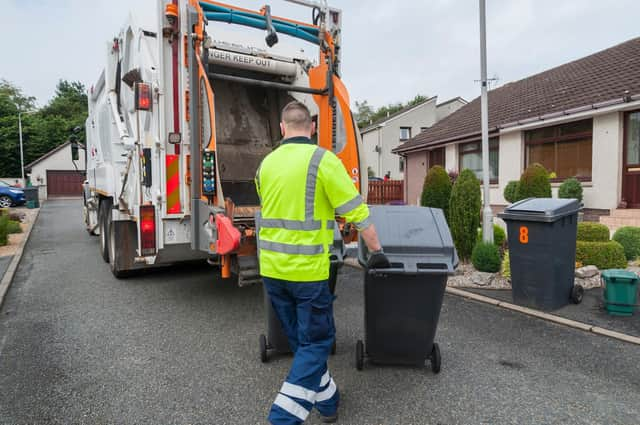Aberdeenshire Council refreshes waste strategy


The council’s Infrastructure Services Committee agreed to extend and amend the 2019-2023 strategy, which also accounted for the impact of Covid and how wood waste is now used as fuel for a biomass plant.
All wood waste collected in Aberdeenshire is currently being sent to the Markinch Biomass plant to be used as fuel. The plant, in turn, supplies low-carbon heat to businesses and houses within Glenrothes town centre—lowering energy bills and helping to prevent fuel poverty and climate change.
Advertisement
Hide AdAdvertisement
Hide AdAs the plant is a combined heat and power project, it supplies enough clean energy to power 56,000 households, offsetting 250,000t of carbon dioxide emissions (CO2) per year, helping the UK economy move away from fossil fuels.
Since all wood waste collected from Aberdeenshire undergoes this process, instead of being composted, the tonnage can no longer count towards the council’s recycling figures.
Similarly, Covid lowered the baseline – or starting point – for recycling rates while services, residents, and businessescombatted the effects of the global pandemic.This trend can be seen across local authorities in Scottish Environment Protection Agency data.
Based on these factors, the committee agreed on a realistic and more achievable goal of 49% recycling targets by the end of 2025.
Much of the waste strategy has already been achieved, including increased material streams for household recycling centres with the introduction of polystyrene as well as dense plastics at some locations; additional staffing resources added where budget allowed; and opening hours amended to be more consistent.
The enhanced recycling rollout continues across Aberdeenshire as part of the current waste strategy, introducing a new orange-lid recycling bin for metal tins, cans, aerosols and foil, food and drink cartons, plastic bottles, pots, tubs and trays.
This leaves blue lid bins for paper, card, and cardboard resulting in lower contamination and much improved recycling quality.
The waste strategy also includes sending non-recyclable waste to the NESS Energy from Waste facility, located in East Tullos, which has begun full operation following the successful completion of testing.
Advertisement
Hide AdAdvertisement
Hide AdThe plant processes non-recyclable waste from Aberdeenshire, Aberdeen City, and Moray and will produce electricity for the national grid as well as heat for a district heating network.
Delaying the next Waste Strategy to 2025/26 also allows the necessary time for Scotland’s Circular Economy Bill to be published, as well as any secondary legislation that will need to be considered as part of any new waste strategy.
The Circular Economy Bill will provide the legislative framework required to support Scotland’s transition to a zero waste and a circular economy – aimed at increasing reuse and recycling rates as well as modernising and improving waste and recycling services.
A feasibility study identifying opportunities for reuse has been completed and the expansion of reuse at household recycling centres – where there is capacity – will be progressed this year.
Chair of the council’s Infrastructure Services Committee Councillor Alan Turner said: “Much work has been done to implement the waste strategy and collect more of what needs to be recycled – and in better quality. While we have agreed to lower our target as a result of our starting point being lower than anticipated, the aim is very much to improve upon the position we are in just now.
"The best way that people across Aberdeenshire can help with that is by reducing what goes in the refuse bin, especially when much of that should be recycled.
"We need to collectively shift our thinking towards reducing our consumption of what we commonly waste, reusing where we can, and recycling everything that would otherwise go to waste."
Vice-chair Councillor Isobel Davidson said: “Over half of what goes into a typical black bin could be recycled if put in the right bin.
Advertisement
Hide AdAdvertisement
Hide Ad"That recycling is a resource that could have gone towards something much better. It is a waste in the truest sense of the word, and we all need to figure out how to change that.”
During the committee, councillors also recognised the efforts of waste crews and thanked them for their hard work, in all weather and circumstances, across winter to collect bins and support household recycling centres.
For an A to Z of where typical household items can be recycled, head to aberdeenshire.gov.uk/wasteAZ
To learn more about Aberdeenshire Council’s enhanced recycling rollout of the orange lid bins, visit aberdeenshire.gov.uk/bincollectionschange
For what is accepted at our household recycling centres and their opening times, visit aberdeenshire.gov.uk/RecyclingCentres